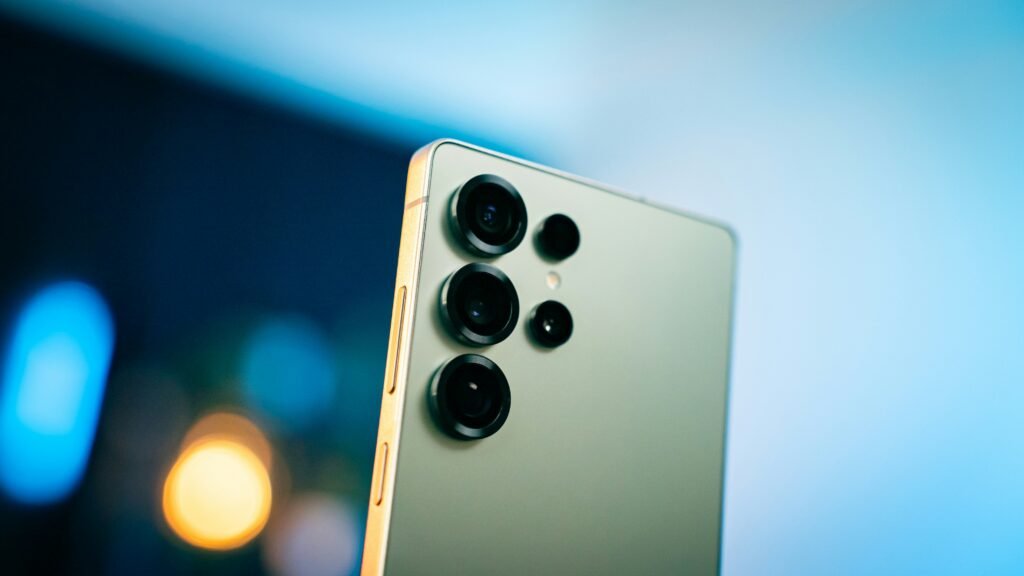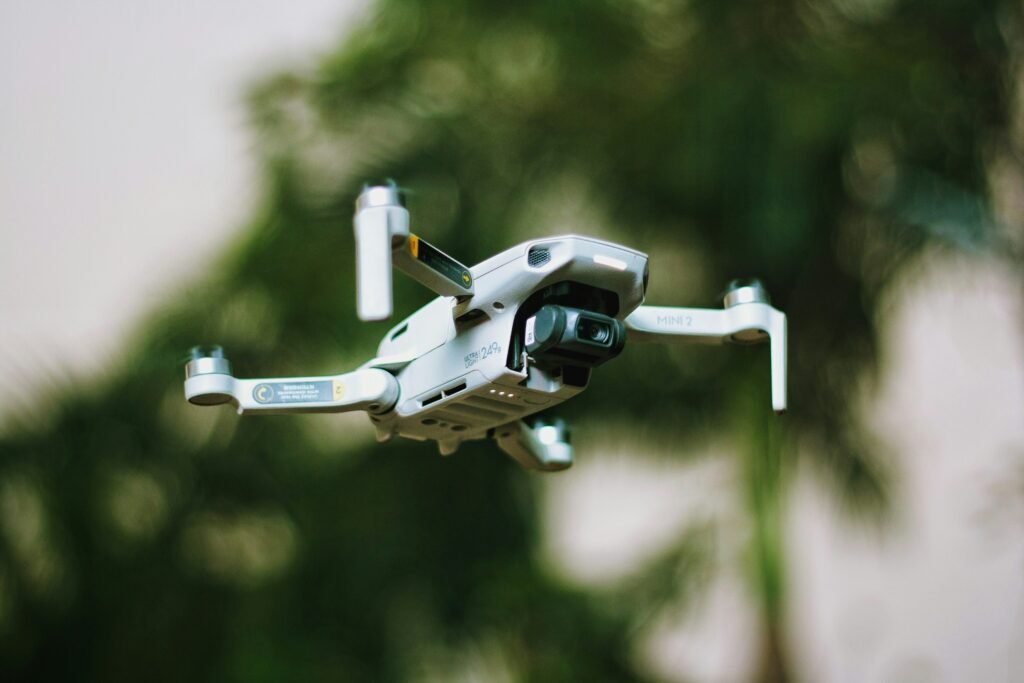
Introduction to the Smartphone Landscape in 2026
The smartphone market in 2026 presents a dynamic tapestry of innovation and consumer focus that has evolved significantly in recent years. As technology continues to advance at an unprecedented pace, various factors have come to shape the best devices of the year. Among these factors, usability, camera capabilities, battery life, and software enhancements stand out as crucial considerations for consumers seeking the perfect smartphone.
Technological advancements have paved the way for features that were once considered futuristic. Artificial intelligence integration, for example, has reached new heights, enhancing user experiences and customizing smartphone interactions. The emergence of advanced computational photography has tremendously improved camera capabilities, allowing average users to capture professional-quality images with ease. As social media platforms continue to thrive, the demand for high-quality cameras has become increasingly critical, further influencing smartphone design and functionality in 2026.
Additionally, battery life has emerged as a primary concern for consumers. With the rise of 5G connectivity and power-hungry applications, manufacturers are focusing on developing smartphones with longer-lasting batteries without compromising performance. Innovations like fast charging and energy-efficient processors have begun to redefine what users expect from their devices, catering to a more mobile-centric lifestyle.
Moreover, enhanced software capabilities have gained precedence as smartphones become an integral part of daily life. Updates that prioritize user privacy and security are increasingly demanded, along with seamless integration of applications across various platforms. Given these factors, the landscape of smartphones in 2026 showcases a variety of devices that balance cutting-edge technology with practical use, ensuring that consumers have access to the best smartphones tailored to their preferences and needs.
Top Features to Look for in 2026 Smartphones
As the smartphone market evolves, factors influencing consumer choices continue to shift in 2026. Understanding the essential features is crucial for making an informed purchase. Prominent among these are advancements in display technology, which have progressed significantly. Foldable and ultra-thin screens are at the forefront, allowing for more compact designs while maintaining usability and high-resolution displays. Such innovations not only enhance the visual experience but also offer versatility in device usage.
Another feature that has gained importance is the camera system. In 2026, cutting-edge camera technology plays a vital role in a smartphone’s appeal. Users are increasingly seeking devices equipped with advanced sensors, improved low-light performance, and AI-enhanced photography modes. This evolution in camera systems allows for professional-grade photography directly from a smartphone, catering to both amateur and enthusiast photographers alike.
Connectivity capabilities cannot be overlooked, as 5G technology becomes more mainstream. The demand for seamless internet access drives manufacturers to focus on offering enhanced connectivity features. Furthermore, the legacy of 5G holds promise for the future with explorations into 6G technology, which will deliver even faster speeds and improved coverage. Therefore, prioritizing smartphones that are 5G-ready is essential for consumers who wish to keep pace with technological advancements.
Equally critical is battery technology. As smartphone demands increase, the need for longer-lasting batteries has never been more pressing. Innovations in this area, such as fast charging and energy-efficient processors, ensure that consumers can rely on their devices throughout the day without constant recharging.
Lastly, the software ecosystems that smartphones operate within also shape purchasing choices. The integration of various applications, updates, and user interfaces can significantly enhance the smartphone experience. It is crucial for consumers to assess compatibility with existing devices and the potential for future upgrades.
Leading Smartphone Brands in 2026
The smartphone market in 2026 continues to be dominated by established brands that have consistently delivered innovative and appealing devices. Among these, Apple, Samsung, and Google stand out as key players, each carving a unique niche within the industry. These manufacturers have not only focused on delivering top-tier hardware but have also emphasized software enhancements and user experience.
Apple remains a significant force in the smartphone sector, with its flagship model, the iPhone 16, showcasing cutting-edge technology and a premium design ethos that resonates with its loyal customer base. The brand’s consistent updates to iOS ensure that users benefit from the latest features, security enhancements, and an overall smoother performance. Additionally, Apple’s ecosystem fosters a high level of consumer engagement, bolstering its position in the marketplace.
Samsung continues to lead with its Galaxy S and Galaxy Note series, reflecting its commitment to versatility and innovation. The Galaxy S22, introduced in 2026, impresses with its advanced camera capabilities and robust display technology, appealing to photography enthusiasts and multimedia consumers alike. Samsung’s focus on sustainability and eco-friendly practices is also noteworthy, as it seeks to address growing environmental concerns among consumers.
In addition to these well-established brands, emerging companies are beginning to make significant impacts in the smartphone arena. Brands like OnePlus and Xiaomi have garnered attention for their value-oriented devices that do not compromise on features or performance. Their flagship models cater to budget-conscious consumers seeking high-quality smartphones that incorporate the latest technology. These newer brands are redefining the competitive landscape, pushing the innovation envelope even further.
Overall, the leading smartphone manufacturers of 2026 exemplify a dynamic blend of experience, innovation, and consumer focus, ensuring they remain at the forefront of a rapidly evolving industry.
Comparison of the Best Smartphones of 2026
In the competitive landscape of smartphones, 2026 has witnessed remarkable advancements in technology, design, and functionality across several leading devices. A comprehensive comparison of the best smartphones currently on the market reveals significant variations in specifications, user feedback, pricing, and performance metrics, all of which are essential for informed decision-making.
Starting with specifications, devices such as the Nexus Z and Galaxy Nova stand out for their robust processing capabilities. The Nexus Z is powered by a next-generation octa-core processor, boasting speeds upwards of 3.0 GHz, while the Galaxy Nova incorporates an equally impressive chipset. Both devices feature high-resolution displays, with the Nexus Z showcasing a 6.9-inch OLED screen and the Galaxy Nova offering a slightly larger 7.0-inch AMOLED display. Users have praised the vibrant color reproduction and clarity of both screens, making them ideal for media consumption.
In terms of camera performance, the Pixel Pro 2 has garnered accolades for its exceptional photography capabilities, featuring a triple-lens setup that excels in low-light conditions. User reviews consistently highlight the competitive edge this smartphone holds in capturing stunning images, rivaling even some dedicated cameras. The iPhone Neo 15, on the other hand, is recognized for its video recording prowess, supporting 8K resolution and advanced stabilization features, a boon for content creators.
Pricing is another critical aspect to consider when comparing these devices. The pricing range for the best smartphones of 2026 fluctuates significantly, with budget options like the Moto Edge Lite, priced at around $699, appealing to cost-conscious consumers, while flagship models, such as the Nexus Z, start at $1,199. Balancing performance metrics with individual budgets is crucial in making a selection.
Ultimately, the best smartphone choice will depend on a combination of personal preferences and specific needs. With innovations continuing to emerge, users are encouraged to explore different models thoroughly and consider their unique requirements, from camera capabilities to processing power, before making a final decision.
Budget vs Premium Smartphones in 2026
The smartphone market in 2026 is characterized by a distinct segmentation into budget-friendly and premium devices, each catering to different consumer needs and preferences. Budget smartphones are designed to provide essential features at an affordable price point, making them an ideal choice for users who prioritize functionality over luxury. In contrast, premium smartphones offer cutting-edge technology, superior performance, and advanced features that attract consumers willing to invest more for a high-end experience.
Consumers opting for budget smartphones often seek value for their money. These devices typically include adequate performance capabilities, such as reliable processors and decent camera systems, allowing users to accomplish daily tasks without significant compromises. In many cases, they feature sizable displays and sufficient battery life, addressing the core needs of a large segment of the market. Additionally, budget devices often come with attractive pricing strategies, enabling a broader demographic access to smartphone technology, which aligns with the growing demand for affordable communication devices globally.
On the other hand, premium smartphones distinguish themselves through enhanced specifications and exclusive features. These devices often incorporate the latest advancements in camera technology, display quality, and processing power, allowing users to enjoy an unparalleled user experience. Furthermore, premium smartphones frequently include superior build quality and design aesthetics, appealing to consumers who value both functionality and style. However, the higher price tag may deter budget-conscious shoppers.
Ultimately, the decision between budget and premium smartphones in 2026 hinges on individual needs and priorities. While budget options deliver essential functionality at a lower cost, premium offerings provide cutting-edge technology and design for those willing to invest more. Balancing performance, features, and value ensures consumers make a choice that aligns with their smartphone usage and lifestyle demands.
Smartphone Trends in 2026: What’s Next?
As we look towards the future, the smartphone landscape is set to witness groundbreaking innovations that will redefine user experiences. One prominent trend expected to gain traction in 2026 is the enhancement of augmented reality (AR) and virtual reality (VR) applications. With advancements in display technology, future smartphones are likely to feature high-resolution screens capable of immersive AR and VR experiences. This development may tap into the expanding fields of gaming, education, and remote collaboration, allowing users to interact with digital environments seamlessly.
Additionally, improvements in artificial intelligence (AI) will play a critical role in shaping smartphone capabilities. Personal assistants are anticipated to become more intuitive and responsive, utilizing machine learning algorithms to adapt to user preferences over time. This will not only streamline daily tasks but also enhance the overall efficiency of smartphones, enabling them to anticipate user needs. Enhanced AI features may include smarter real-time translations, personalized content recommendations, and advanced security measures that learn and evolve with user behavior.
Moreover, sustainability and eco-friendly practices are poised to take precedence in smartphone production. As consumers become increasingly aware of their environmental impact, manufacturers are likely to prioritize sustainable sourcing of materials and responsible manufacturing processes. Innovations in this area may encompass the use of recycled materials, energy-efficient manufacturing techniques, and modular designs that allow for easy upgrades rather than complete replacements. The shift towards sustainable smartphones not only aligns with consumer values but also helps to mitigate the environmental footprint of the technology sector.
In conclusion, the smartphone trends of 2026 highlight a future where immersive technologies, intelligent systems, and eco-friendly initiatives converge to create devices that not only enhance usability but also prioritize sustainability. This evolution will cater to the growing consumer demand for smarter and more responsible technology.
User Experience Insights
In 2026, smartphone technology has evolved significantly, leading to a diverse array of devices, each offering unique features and functionalities. User feedback has become increasingly valuable in assessing the suitability of a device for everyday use. Many users express their satisfaction with the intuitive interfaces found in the latest models. The seamless integration of hardware and software enhances usability, allowing for smooth navigation and effortless multitasking. One common praise among owners is the enhanced responsiveness and speed of the applications, which have dramatically improved thanks to powerful processors and optimized operating systems.
However, despite the advancements in technology, some users report issues that detract from their overall satisfaction. A recurring concern is the inconsistency of battery life across different models. While some smartphones boast all-day battery performance, others fall short, requiring users to adapt their routines to accommodate frequent charging. Additionally, while most users appreciate the high-quality camera systems, there are instances of inconsistent photo quality in varying lighting conditions, which has led some to wish for further improvements.
On the topic of physical design, many users are delighted with the lightweight and slim profiles of the latest smartphones. This factor not only affects portability but also enhances the overall aesthetic appeal of the devices. Nevertheless, a few users have mentioned that the delicate nature of modern smartphone materials makes them prone to scratches and cracks. Consequently, protective cases have become a staple for many owners, highlighting an ongoing battle between design elegance and practical durability.
Ultimately, user experiences with the best smartphones of 2026 reveal a blend of delight and disappointment. Owners appreciate the advancements in performance and design, yet they also call attention to areas requiring further refinement. By understanding these insights, prospective buyers can make informed decisions tailored to their personal needs and preferences.
Tips for Choosing the Right Smartphone for You
In an ever-evolving market, selecting the right smartphone can often be a daunting task. To ensure that you make an informed decision, it is critical to assess your personal needs first. Consider how you primarily use your device; are you a heavy gamer, a frequent traveler, or someone who relies heavily on productivity applications? Understanding your usage patterns will guide you towards a smartphone that perfectly aligns with your lifestyle.
Next, comparing the technical specifications of different smartphones is essential. Key features such as processing power, camera quality, battery life, and display type are fundamental aspects to analyze. Pay particular attention to the chipset and RAM, which can significantly influence the phone’s performance and multitasking abilities. Furthermore, make sure to evaluate storage options, especially if you frequently store large files or capture high-resolution images.
Before making your final decision, it is advisable to test devices in-store. Holding a smartphone, navigating its interface, and examining its build quality can offer insights that specifications alone do not reveal. Many retailers provide opportunities to try out devices, allowing you to see how the smartphone feels in your hand and observe the responsiveness of its touchscreen.
Additionally, consider the longevity and software support offered by smartphone brands. Opt for a device that receives regular software updates and has a proven track record for longevity. A smartphone that supports the latest operating system and security features will not only enhance usability but also provide valuable protection against vulnerabilities.
By carefully evaluating your needs, comparing specifications, testing devices, and factoring in longevity, you can confidently select the smartphone that meets your requirements and enhances your daily life.
Conclusion: The Future of Smartphones Beyond 2026
As we reflect on the best smartphones of 2026, it is evident that this year has witnessed remarkable advancements that have transformed the mobile landscape. From cutting-edge camera technologies to enhanced battery life and artificial intelligence integration, the strides made in smartphone innovation are truly noteworthy. Devices have become more than just communication tools; they have evolved into multifaceted machines that cater to the diverse needs of users globally. This evolution has set a new benchmark for smartphone expectations, with consumers increasingly seeking higher performance, sophisticated features, and seamless user experiences.
Looking beyond 2026, the trajectory of smartphone technology indicates that further innovations will redefine what consumers can anticipate. With the advent of 5G networks, we are likely to see an explosive increase in data speeds and connectivity, allowing smartphones to perform tasks previously thought to be impractical. Additionally, advancements in artificial intelligence will continue to enhance personalization, enabling devices to understand and anticipate user needs in real-time. This trend signifies not just improved performance but a profound shift toward user-centric design.
Moreover, the increasing focus on sustainability and eco-friendly practices is poised to play a crucial role in the future of smartphones. Companies are aligning themselves with environmental considerations by developing devices that are more energy-efficient and recyclable. As consumers become increasingly conscious of their environmental impact, this movement will influence buying decisions and encourage manufacturers to innovate responsibly.
In summary, the future of smartphones promises to be bright and dynamic, marked by continuous technological advancements that will shape user experiences for years to come. As we navigate through these developments, it will be essential to stay informed and adaptable to the changes that lie ahead, ensuring that we embrace the innovative aspects of smartphones as they emerge.




